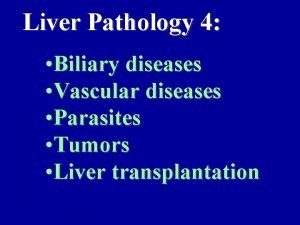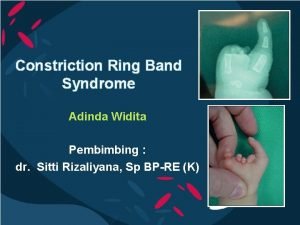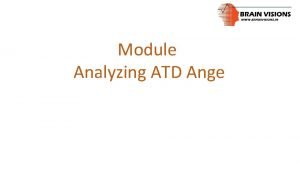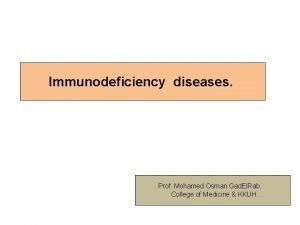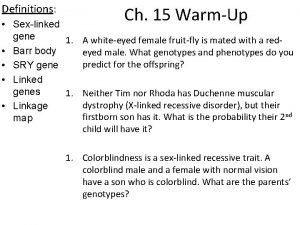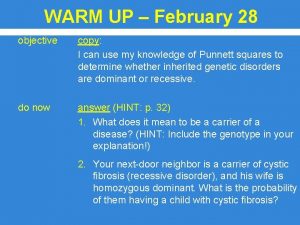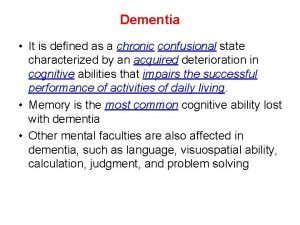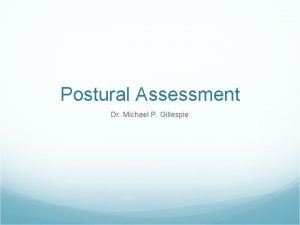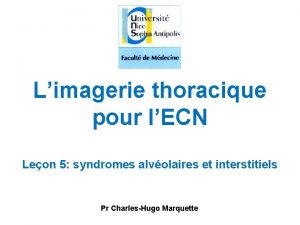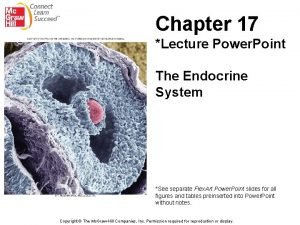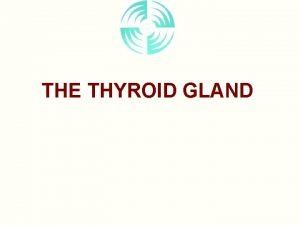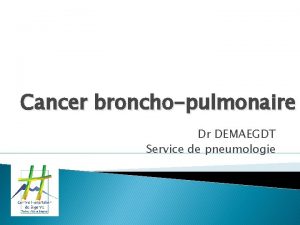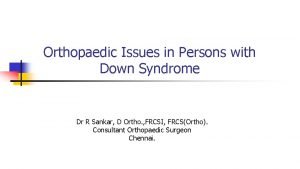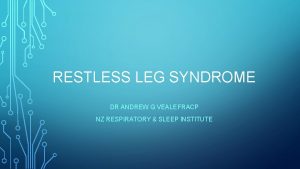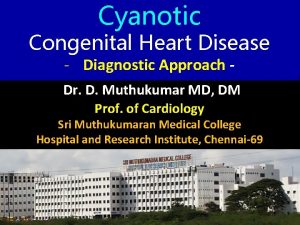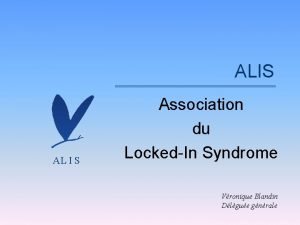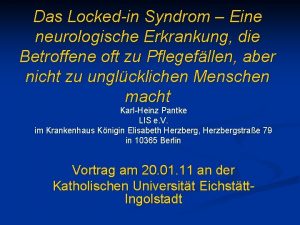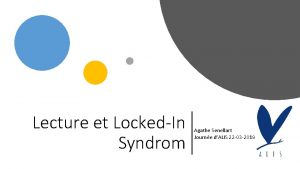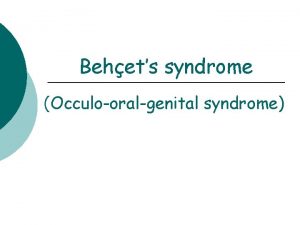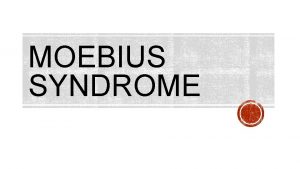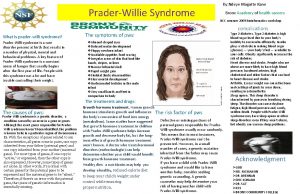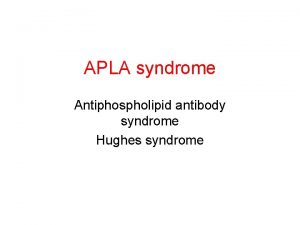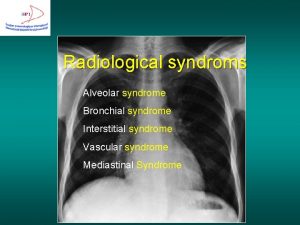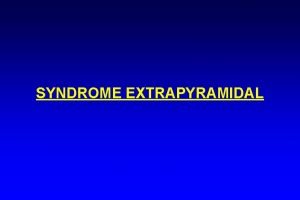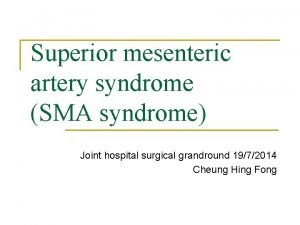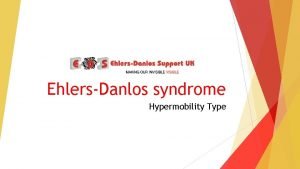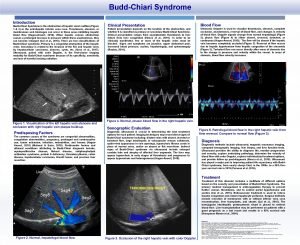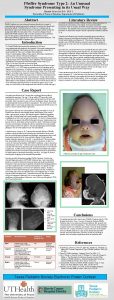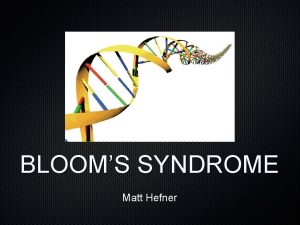Syndrome What is Lockedin syndrome Lockedin syndrome is




















- Slides: 20


Syndrome

What is Locked-in syndrome? Locked-in syndrome is: a state of wakefulness and awareness with quadriplegia and paralysis of the lower cranial nerves Resulting : inability to show facial expression, move, speak (aphonia), but communicate, except by coded eye movements

Synonyms Cerebro-medullospinal disconnection De-efferented state Pseudo coma The condition was made famous by Jean-Dominique Bauby, who dictated his memoir, The Diving Bell and the Butterfly — which was made into an Oscar-nominated film — by blinking.

Causes of LIS A lesion in the pons, a part of the brainstem that contains nerve fibers that relay information to other areas of the brain, usually due to brainstem stroke.

Causes (cont’d) Traumatic brain injury De-myelinating diseases Medication overdose. In end-stage amyotrophic lateral sclerosis /Lou Gehrig’s disease(motor neuron disease).

Diagnosis LIS diagnosis can sometimes take months Clinical evaluation needed. Ability to do eye blinking or vertical eye movements. Brain imaging with CT or MRI EEG can also be used to show normal sleep-wake patterns.

The two phases: Acute phase - severe condition where medical assistance needed in hospital setting. Tracheostomy : an opening surgically created through the neck into the trachea to allow breathing. Respiratory tract, monitoring and cardio-vascular support. Blood thinners administered to avoid thrombolysis. -

The two phases: rehabilitation phase Progressive verticalization as well as positioning in bed and wheelchair. Exercises to maintain range of motion, breathing, eyes, head, trunk and limb control exercises Use of antispasmodic drugs help to decrease spasticity Training to use assistive technology devices and powered wheel chair to encourage independency. The use of indwelling catheters, allowing more freedom for mobility and leisure activities.

Treatment There is no specific treatment. Supportive care is the mainstay of treatment and should include the following: - Preventing systemic complications due to immobilization (pneumonia, UTI, thromboembolic disease) Providing good nutrition Preventing pressure ulcers Providing physical therapy to prevent limb contractures

Other treatment Since cognitive function is intact and communication is possible, patients should make their own health care decisions. Speech therapists help establish a communication code: using eye blinks or movements.

Assistive technology to upgrade quality of life The Eye gaze Edge is an eye-operated communication and control system. By looking at control keys or cells displayed on a screen, a user can generate speech either by typing a message or selecting pre-programmed phrases. Eye gaze Edge Systems are being used to write books, attend school and enhance the quality of life of people with disabilities all over the world. http: //www. eyegaze. com/eye-tracking-assistive-technology-device/

Assistive technology to upgrade quality of life Eye–gaze Response Interface Computer Aid (ERICA) uses a camera and infrared light to detect the position of a person’s gaze on a computer screen. In addition, ERICA uses can produce a computerized voice, allowing the patient talk to others.

Assistive technology to upgrade quality of life The Tobii PCEye can track a person’s pupil even if they’re wearing lenses or glasses, according to the company’s official website. Cephalic control: a joystick activated by movements of the head to move a wheel chair. Head mouse emulator : a little reflector placed on the forehead that sends information to a small receptor in a computer. More sophisticated computerized interfaces to activate scanning system permitting combined computer-supported communication and safe wheelchair control. Switch under first toe with which she can write, communicate, send emails and play computer games.

Assistive technology to upgrade quality of life Mind –controlled computers, known as Brain – fingers: a cap powered by EEG, or electroencephalography, is placed on the patient’s head. It uses brainwaves, which in turn make the cursor move certain directions.

Recovery & Prognosis Recovery of horizontal eye movements within first four weeks = a good neurological prognosis. Once a LIS patient becomes medically stable, and given appropriate medical care, life expectancy increases to several decades. Chronic LIS patients typically self-report meaningful quality of life Demand for euthanasia is surprisingly infrequent. The great majority of patients are weaned from their tracheostomy during the first months.

Recovery & Prognosis During inpatient rehabilitation, more than 50% of individuals start feeding orally and their gastrostomy is removed during the first year. Level of independence in activities of daily living is directly related to motor recovery; majority can use powered wheelchair. Personal care still requires assistance. Very few reach a level of motor recovery enabling them to feed and perform ADLs on their own. Most of patients return home.

Recovery & Prognosis Despite the degree of their impairments, they demonstrate extraordinary creativity in resuming their parental and social roles. Few return to the labor market Social participation and leadership is sometimes remarkable, as demonstrated by some of their achievements: some offer conferences, create mutual aid funds or write books. Most of the persons with LIS have a great determination to live.

Comorbid conditions: Under nutrition Dehydration Cardiac failure Chronic obstructive pulmonary disease Uncontrolled emotional lability Aspiration pneumonia

Resources/community services: Rehabilitation Institute Gingras-Lindsay de Montréal Address: 6363 Chemin Hudson, Montréal, QC H 3 S 1 M 9 Phone: (514) 340 -2085 Montreal Neurological Institute and Hospital 3801 Rue University, Montréal, QC H 3 A 2 B 4 514 398 6644 Organisme Benoît Duchesne C. P. 345 Saint-Sauveur (Québec) J 0 R 1 R 0 (450) 224 -2863
 Pathology
Pathology Constriction ring syndrome
Constriction ring syndrome Atd angle in dermatoglyphics
Atd angle in dermatoglyphics Marfan syndrome genetics
Marfan syndrome genetics Syndrome cordonal postérieur signes
Syndrome cordonal postérieur signes Hyper igm syndrome
Hyper igm syndrome Cushing syndrome mnemonic
Cushing syndrome mnemonic Is klinefelter syndrome autosomal or sexlinked
Is klinefelter syndrome autosomal or sexlinked Syndrome puberty
Syndrome puberty Wernicke-korsakoff syndrome
Wernicke-korsakoff syndrome Gothic shoulders posture
Gothic shoulders posture Syndrome alvéolaire
Syndrome alvéolaire Cushing syndrome
Cushing syndrome Euthyroid syndrome
Euthyroid syndrome Oedeme en pelerine definition
Oedeme en pelerine definition Caudal regression syndrome
Caudal regression syndrome Hellp syndrome meaning
Hellp syndrome meaning Syndrome de la commissure grise
Syndrome de la commissure grise Kleinfelters syndrom
Kleinfelters syndrom Restless leg syndrome nz
Restless leg syndrome nz Cyanotic vs acyanotic
Cyanotic vs acyanotic
